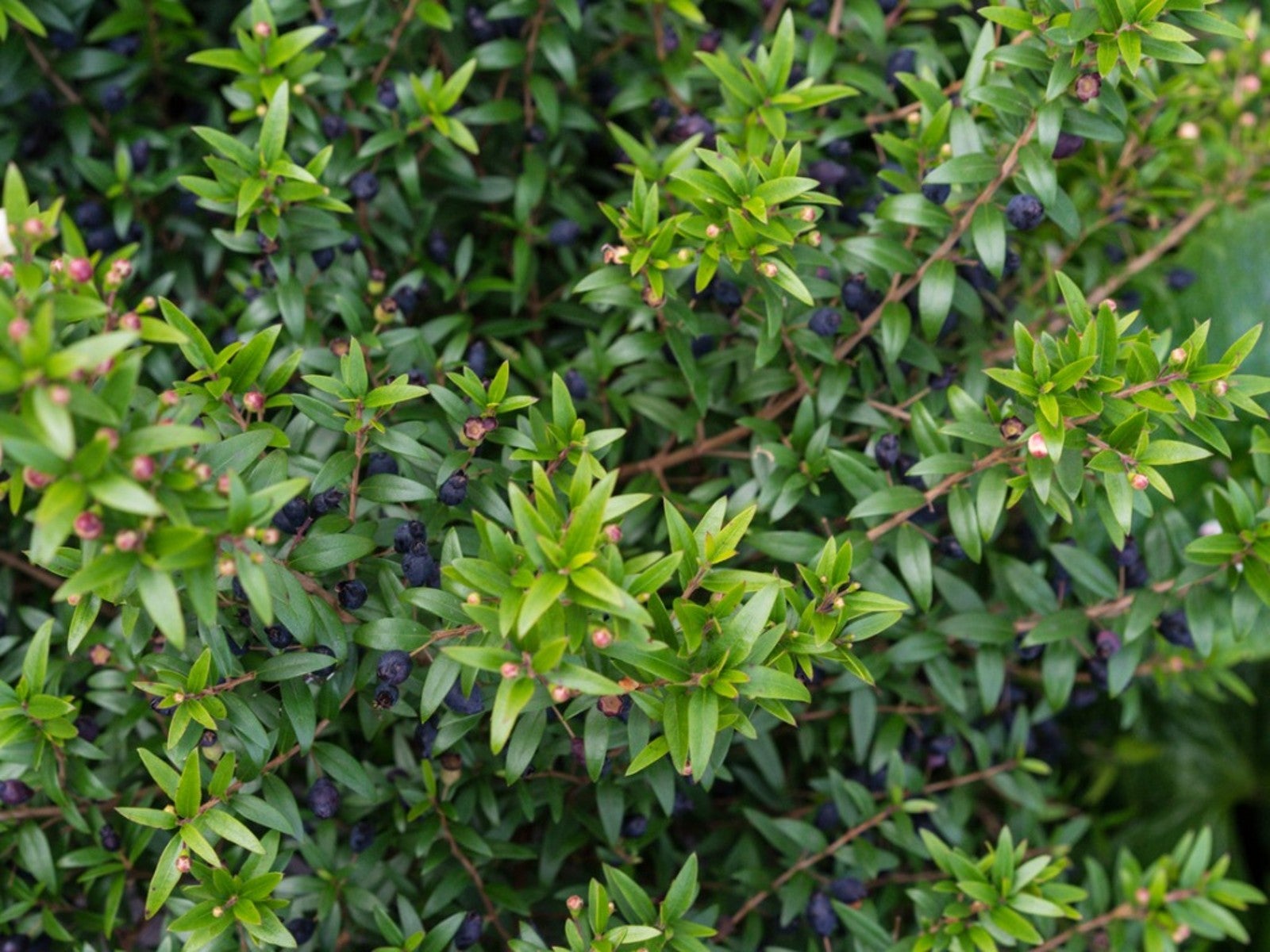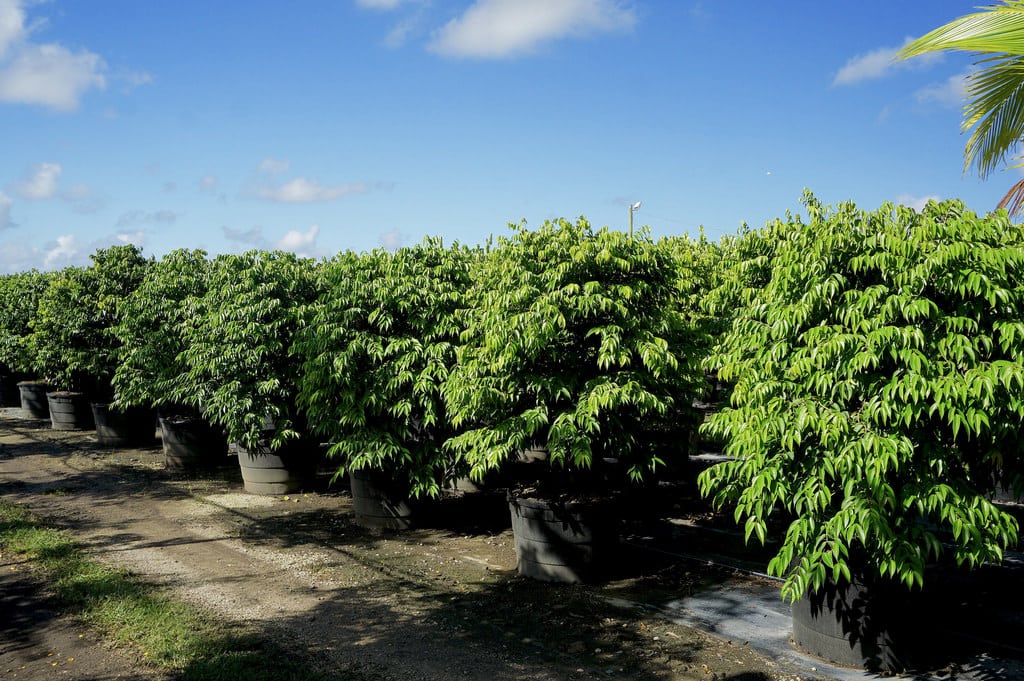Sweet Myrtle Care – How To Grow Sweet Myrtle In Your Garden


Sweet myrtle (Myrtus communis) is also known as true roman myrtle. What is sweet myrtle? It was a plant commonly used in certain Roman and Greek rituals and ceremonies and was cultivated widely in the Mediterranean. This small tree to large bush makes an excellent accent to the landscape. The evergreen plant is remarkably versatile and adapts to a wide range of conditions. Learn how to grow sweet myrtle and add this beautiful plant to your garden.
Sweet Myrtle Plant Info
Myrtle has been cultivated since the heyday of the Roman civilization. Among the many versatile methods of sweet myrtle care, topiaries were commonly fashioned from the plant, and it was a culinary and medicinal herb. Today, we can benefit from its sweet-smelling flowers, finely textured evergreen foliage, and its unlimited variety of form.
Try growing sweet myrtle as a foundation plant, in containers, grouped as a hedge or border, or as standalone standards. No matter how you use myrtle in the landscape, it has a winning look and carefree maintenance that is suitable for most regions.
Myrtle made its way from the Mediterranean in the 16th century when it was introduced to England. The plants would be grown indoors during winter and brought outside to decorate patios, balconies, and other outdoor spaces in summer. While not winter hardy, the plant was a stylish addition to greenhouses, solariums, and other sunny locations of the home during the cold season.
Plants may grow 5 to 8 feet (1.5-2 m.) as shrubs but may achieve 15 feet (5 m.) in height if allowed to produce a small tree. Leaves are simple, dark green, oval to lance shaped and aromatic if bruised. Flowers appear in early summer and are fragrant, small, and white to blushed. Once flowering has occurred, tiny bluish black berries appear, looking much like blueberries.
Among the more interesting, sweet myrtle info is its long history, which includes its appearance in the Bible and Jewish folklore.
How to Grow Sweet Myrtle
Sweet myrtle is hardy to USDA zones 8 to 11. The plant prefers full to partial sun but tolerates almost any soil provided it drains well. Regular watering is also a requirement for this plant, although once established it can survive short periods of drought.
Gardening tips, videos, info and more delivered right to your inbox!
Sign up for the Gardening Know How newsletter today and receive a free copy of our e-book "How to Grow Delicious Tomatoes".
The fun part is in the growth form, which can be managed to create many different shapes. As mentioned, the plant can be trained to a topiary, sheared for a hedge, and has many other uses. Sweet myrtle is not tolerant of high humidity and is a slow growing plant. It performs well in containers and raised beds. Iron chlorosis is possible in areas with a pH of greater than 8.3.
Sweet Myrtle Care
Watch for patches of sooty mold on the foliage, which may indicate scale insects. Other pest problems most frequent with this plant are thrips and spider mites in hot, dry weather.
Fertilize sweet myrtle in early spring once annually for best results. During summer, water the plant deeply once per week.
In northern climates, bring plants indoors to overwinter. Prune the plant after blooming. If you wish for it to grow into a small tree, simply remove the spent blooms and clean out any dead or diseased wood. For a hedge, sheer the plant to the size desired. Bonsai and topiary forms take more training, which should be started in infancy. You can truly shape myrtle to almost any form you like and there are dwarf forms that work well in formal gardens.

Bonnie Grant is a professional landscaper with a Certification in Urban Gardening. She has been gardening and writing for 15 years. A former professional chef, she has a passion for edible landscaping.
-
 Looking For Plants To Give You The Soft And Fuzzies? Try These 5 Fuzzy Leaf Plant Options
Looking For Plants To Give You The Soft And Fuzzies? Try These 5 Fuzzy Leaf Plant OptionsLovers of texture, drama, silver foliage and tactile plants will adore these special sensory garden additions. These fuzzy leaf plant options will leave you all aglow
By Susan Albert
-
 Get Ready For A Summer Of Hummers! Grow These Full Sun Hummingbird Plants and Flowers
Get Ready For A Summer Of Hummers! Grow These Full Sun Hummingbird Plants and FlowersIf you’re lucky enough to enjoy a sunny backyard, make sure you are maxing out on your pollinator opportunities and grow these full sun hummingbird plants and flowers
By Tonya Barnett
